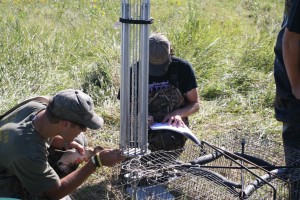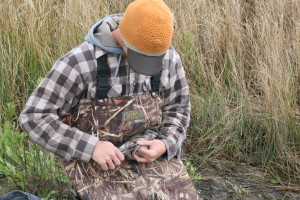Aluminum bands are the go-to for bird banding, but there was a new alloy called incloy that we were putting on larger waterfowl. Even using a banding pliers, it was hard to get them to crimp right without having to adjust the roundness of the band. They always wanted to overlap.

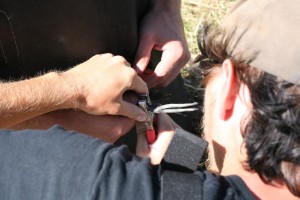
Here you can see a standard aluminum band placed on a leg. The identifying number allows us to track the migration of the birds, but relies on hunters turning in the band. To combat this, the USFWS partnered with Ducks Unlimited are placing green reward bands on only Mallard ducks.
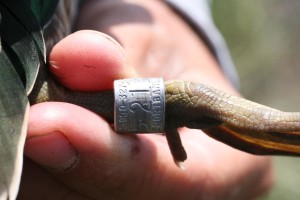
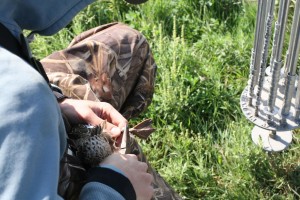
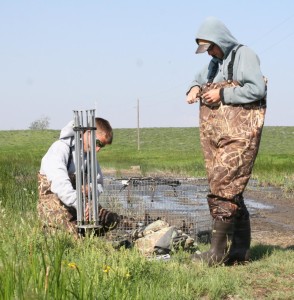
Below, you can see the standard device used to hold the different sizes of bands. This allows us to put a band on any species of waterfowl that will not fall off, even if they are just in their hatch year.
